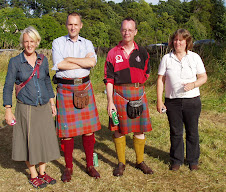Not too bad a day. No walk, because I had to wait in for a
delivery. These days, almost anything will be left on the doorstep while the
delivery man flees, but this time it was cider and I was completely out: so I
stayed here.
My sourdough starter seems less active today than yesterday.
Am I making it nervous with my constant solicitude? I gave it an extra feed
this morning, as nourishedkitchen recommends for the fourth day.
As for knitting, almost none. Following your advice, Pom Pom,
I wound a skein of yarn for the capelet. I decided that I could cast on like a
normal human being, and pick up stitches from the cast-on at the end. The
crochet provisional cast-on is beyond me. Others are possible, but tedious, and
– exactly as you say, KayT – even simple instructions are a bit much at the
moment.
The yarn on my fingers feels a lot more like fingering than
the DK specified by the pattern. But the label says DK, and – much more
significant – the yardage per gram (or whatever) is precisely as specified in
the pattern for a different yarn. I may or may not proceed to a cast-on
tomorrow.
The word I was struggling to retrieve yesterday is “gradient”.
I did a class on the subject with Carol Feller at the EYF once, but didn’t come
away with much in the way of ideas.
Non-knit
There was an article in the Times the other day about the
undertakers who did my husband’s funeral three years ago, and my grandson
Oliver’s, 25 years ago. Nobody loves undertakers, but they are rather essential
at a moment like this. The article said that they saw which way the wind was
blowing early on, and bought in a generous supply of PPE. (I am glad my husband
wasn’t carried out of here by a team dressed in HAZMAT costume.)
And I thought: most care homes are operated for profit (like
undertakers). Maybe they should have thought ahead, too.



Jean, my recommendation for the lazy knitter provisional cast-on (that's me) is use a smooth constrasting yarn, like a cotton, cast on, knit a few rows in the cotton, then start your normal knitting. When done, it is easy to snip out the cotton and you have the loops ready to go. I am perfectly capable of the crochet cast-on, but I must say I use the lazy way more often.
ReplyDeleteOh, I like this idea, Mary Lou, which I’d seen elsewhere and forgotten. Like Jean I cannot get a crochet cast on to work.
ReplyDeleteI second that recommendation, or what Cap Seaze's book calls "open cast on" using a circular needle instead of waste yarn. It's very similar to the two-strand tubular cast on, except that only the main colour forms the loops, and the waste yarn is kept taut.
ReplyDeleteLucy Neatby has a very clear video on a certain type of provisional cast on using both knitting needle and crochet hook should your regular one ever fail you, Jean. It 's not the one where you pick up stitches from a crochet chain. It does take a little practice to work that first stitch and. It does require that you have a crochet hook handy but it is one of the clearest knitting videos I have ever seen and it does make you feel very clever when you have executed it. Worth a look even if you are already satisfied with what you have. Google "Knitting Essentials: Lucy Neatby Provisional Cast on". Even without the phrase "Knitting Essentials" it should come up. She uses bright pink yarn in the video. Chloe
ReplyDeleteOh, started started typing before I saw Mary Lou's method, (in a hurry this morning). I will use hers one from now on. Still for lessons in knitting clarity, Lucy Neatby is a joy to watch. Chloe
ReplyDeleteCheck out Woolly Wormhead's tutorials:
ReplyDeletehttps://www.woollywormhead.com/cast-on
she's so clear and informative.
I find it much easier to do if I use a long straight needle and anchor it more or less upright between my knees!